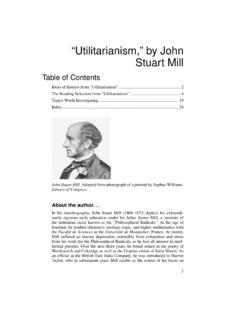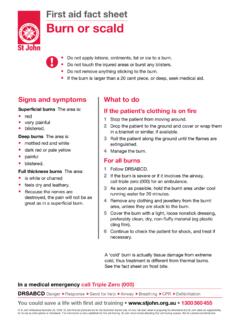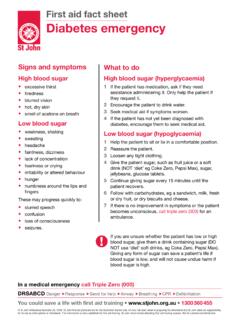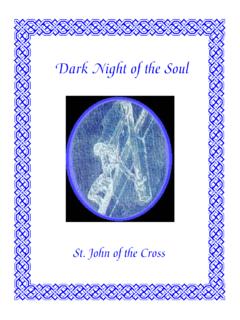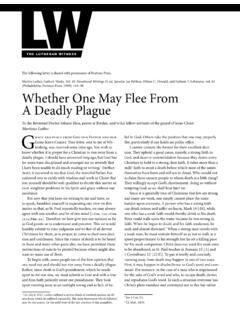Transcription of The Cycle of Liberation - John Muir College
1 , !' -,1'" - ',:ilL., T e yc eo Liberation Bobbie Harro The Cycle of Liberation 463 88 As people come to a critical level of understanding of the nature of oppression and their roles in this systemic phenomenon, they seek new paths for creating social change and taking themselves toward empowerment or Liberation . In my years as a social justice edu-cator, it became increasingly clear that most socially conscious people truly want to "do something about" the injustices that they see and they recognize that simple, personal level changes are not enough. They want to know how to make system-level change man-ageable and within their grasp, and they often become frustrated since so little has been written about the process of Liberation . As more students asked, "How do we make a dent in this thing that seems so big?
2 " I began to think about how we might consciously transform the Cycle of Socialization (see chapter 2 of this volume). The Cycle "teaches" us how to play our roles in oppression, and how to revere the existing systems that shape our thinking, leading us to blame uncontrollable forces, other people, or ourselves for the existence of oppression. If there is an identifiable pattern of events that repeats itself, becomes self-fulfilling, and leads us to a state of unconsciousness about issues of oppression, then there may be another iden-tifiable pattern of events that leads us toward Liberation from that thinking. I began to read about and study efforts to eliminate oppression on a systemic level. and discovered that indeed, some paths were successful at actually creating the kind of lasting change that addressed the root causes of the oppression, and people's roles in it, while other paths were not.
3 These paths were not always the same, and certainly were not linear, but they had in common the same Cycle -like traits that characterized the socialization process that teaches us our roles in oppression. There were certain skills and processes, certain ways of thinking and acting in the world, certain seemingly necessary ingredients that were present in every successful Liberation effort. I am defining Liberation as "critical transformation," in the language and thinking of Paulo Freire (1968). By this I mean that one must "name the problem" in terms of sys-temic assumptions. structures, rules, or roles that are flawed. Significant social change cannot happen until we are thinking on a systemic level. Many people who want to over-come oppression do not start in the critical transforming stage, but as they proceed in their efforts, it becomes necessary for them to move to that level for success.
4 The following model describes patterns of events common to successful Liberation efforts. Its purpose is to organize and name a process that may otherwise be elusive, with the goal of helping people to find their pathway to Liberation . It could be characterized as a map of changing terrain where not everyone goes in the same direction or to the same destination or at the same speed, so it should be taken not as a "how to," but rather as a description of what has worked for some. 464 Working for Social Justice: Visions and Strategies for Change Cycle of Liberation lntrapersonal Change within the Core of People about What They Believe about Themselves 'M'P' Wi Movement Out of Self Toward Others Seeking Experience and Exposure Speaking Out and Naming Injustices Taking Stands, Using Tools Exploring and Experimenting Interpersonal Change in How We Value Other; and See the War: ""''"*' Empowerment of Self Introspection Education Consciousness Raising Gaining Dismantling Inspiration Collusion Authenticity Privilege Internalized Oppression Developing Analysis and Tools lfii@IIMUI Integrating Spreading Hope -Self-Love Self-Esteem Balance Joy Support Security Spiritual Base and Inspiration Living Our Dreams Modeling Authenticit~.
5 ; '!f"~'"II1U'Mf!fl lntegnty and Wholeness Taking Care of Self and Others Systemic Change in Structures, Assumptions, Philosophy, Rules, Roles Figure 88. 1 The Cycle of Socialization ~~----~-- gat1pnm1 Building Commumty Working With Others A. People "Like Us" for Support B. People "Different from Us" for Building Coalitions, Questioning Assumptions, Rules, Roles, and Structures of Systems MMP Organizing, Action Planning Lobbying, Fund Raising Educating, Renaming Reality Refusing to Collude or Take Privilege Being a Role Model, an Ally Transforming Anger Moving Into Action The model described in this chapter combines theory, analysis, and practical experienc~ (see fig. ). It describes a cyclical process that seems to occur in most successful socia_ change efforts.
6 Leading to some degree of Liberation from oppression for those involveci regardless of their roles. It is important to note that one can enter the Cycle at any point through slow evolution or a critical incident. and will repeat or recycle many times ic the process. There is no specific beginning or end point. just as one is never "done" work-ing to end oppression. Although there is not a specific sequence of events in the Cycle . it is somewhat predictable that all of the levels (intrapersonal. interpersonal and systemic 1 will occur at some point. ' Interpersonal/ -Change in How We Value Others ' and See the World -== : ons, co;_-ctions, =-: o: Jctures BMiii :Jrganizing, -'ction Planning, .obbying, = -~d Raising :: Jcating, '---=:-aming Reality = =' -S1ng to Collude : -ake Privilege : = -~ a Role Model, =-~ y -?)
7 ': ..,,ng Anger ; ::Action _:: experience _ :'st successful social : :-0r those involved, -: .::~ cle at any point, ::, le many times in :-:cTer "done" work-. ;:>:us in the Cycle , it ':' and systemic) The Cycle of Liberation 465 Often Liberation begins when a person begins to experience herself differently in the world than s/he has in the past. It is marked by an intrapersonal change: a change in the core of someone about what s/he believes about her/himself. This may be the result of a critical incident or a long slow evolutionary process that shifts our worldviews. I refer to this phase as the waking up phase. We may experience some form of cognitive dissonance, where something that used to make sense to us (or that we never questioned), ceases to makes sense.
8 Perhaps a white mother adopts a child who is Puerto Rican and in dealing with her expectations for the child suddenly realizes that she has more deeply based racist attitudes than she thought she did. Perhaps a heterosexual woman who has a gay coworker recognizes that the longer she works with him, the more "ordinary" he becomes to her, and the more she gets angry when people make antigay remarks. Perhaps a wel-fare recipient begins to get angry that she is often treated with disrespect by service providers and the general public, and begins to see the disrespect as a pattern of how poorer people are treated in the United States. Any of these examples could mark the beginning of the Cycle of Liberation . Once we know something, we can't not know it anymore.
9 The process may not begin immediately, but odds are that it will begin at some point. Often the first part of the process involves a getting ready phase. This involves consciously dismantling and building aspects of ourselves and our worldviews based on our new perspectives. Processes that are cen-tral to this first part of Liberation are introspection, education, and consciousness rais-ing. We become introspective to identify which aspects of our beliefs, attitudes, and behaviors need to be challenged. We tend to pay attention to and inventory thoughts. language, and actions to see if they are consistent with our newly recognized beliefs. or if they need to be dismantled. We may discover that we need to educate ourselves: read more, talk to people, bounce ideas and views around with others, begin listening to the news with new ears, seek expertise.
10 We may begin to "make sense" of our experiences differently and seek out more chances to explore what we thought we knew, and ho11-:: compares to the reality. We may start exercising our questioning and challenging s;.::::-to expand our conscious understanding of the world. This getting ready phase is composed of dismantling our wrong or diminishing ::-e::~:' (stereotypes, ignorance or misinformation), our discriminatory or privileged ar:::_::~' (superiority or inferiority), and behaviors that limit ourselves or others (collusio:: : ;-;-~~' sive language, or resignation). It also involves developing a consistency among ..:-_:-.:-,,_ c believe, how we want to live our lives, and the way we actually do it. \\-e me :~ :: :.:: gaining authenticity and coherence between our world view and how we li1 e.
